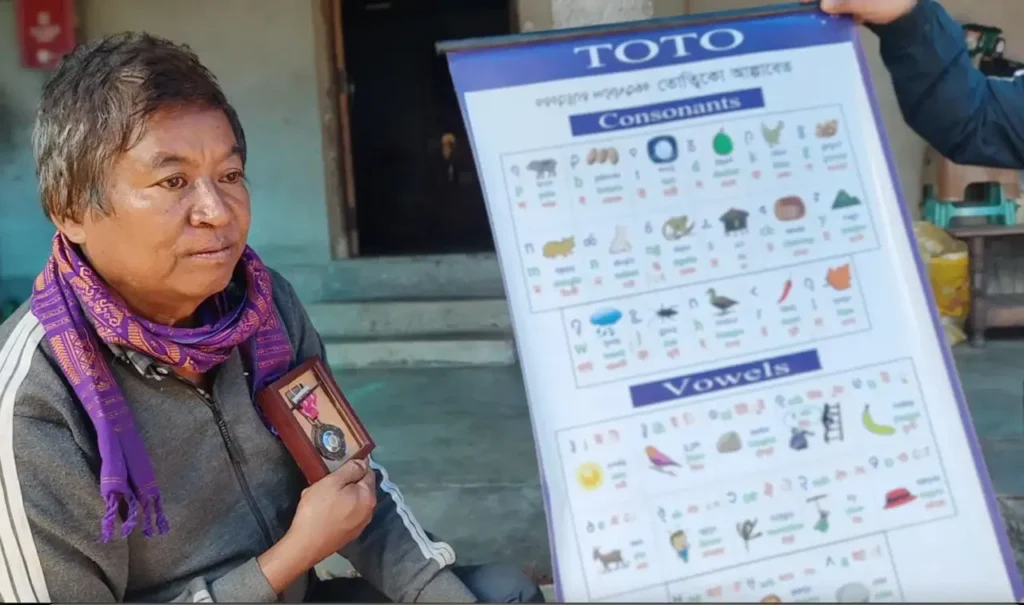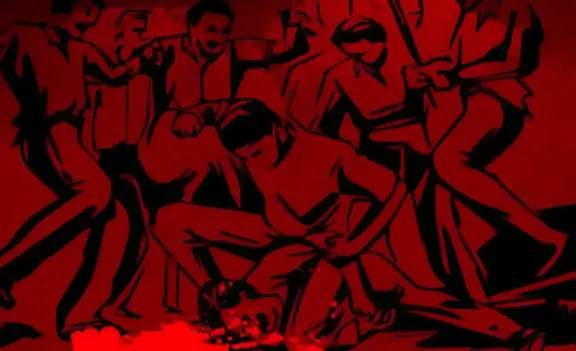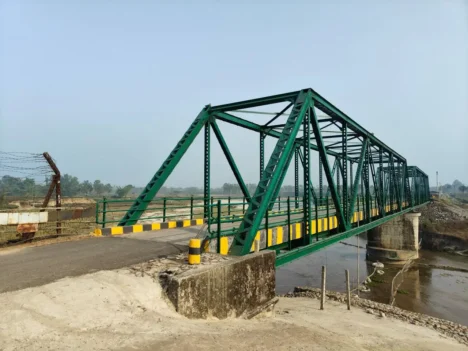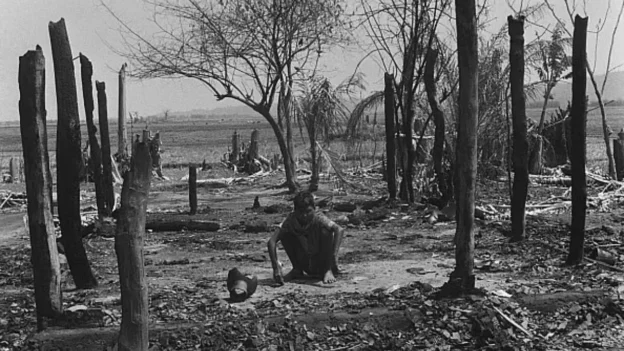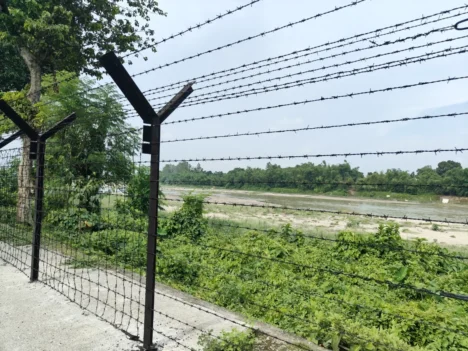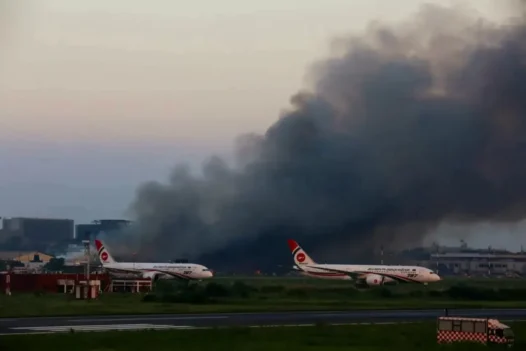It began with a song.
In a quiet house in Totopara — a small, nondescript village nestled on the foothills of Bhutan along the India–Bhutan border — 61-year-old Dhaniram Toto hums a familiar tune by the legendary Bangladeshi singer Runa Laila. The song speaks of the bornomala — a garland of alphabets that binds hearts beyond boundaries — and of birds returning home along the banks of the Meghna River. For Dhaniram, this melody was more than music; it was a mirror reflecting a truth that had long troubled him. It reminded him that his own mother tongue, the Toto language, existed only in the spoken form, without a script, structure, or written identity.
“That song made me think deeply,” he recalls softly, his eyes fixed on the bamboo flute resting beside him. “If alphabets could connect people across rivers and countries, maybe they could also connect us to our roots.” It was this thought — tender, persistent, and quietly revolutionary — that set him on an extraordinary journey: to give shape and sound to a language that was slowly slipping into silence.
The Toto language, spoken by barely a thousand people and listed by UNESCO as endangered, had survived only through oral tradition. In 2015, with no formal training, Dhaniram began shaping its first written script — thirty-seven letters inspired by the sounds and rhythms of daily life: the wind brushing through bamboo, footsteps on clay, the hum of prayers at dusk. Five years later, his effort was complete, earning him the Padma Shri.
Today, his modest two-storied wooden house, surrounded by kitchen gardens, hens, and goats, has quietly become a place of pilgrimage for linguists, journalists, and travellers who come to see how a song from across a border could awaken a dying tongue. “Earlier, no one came here,” he smiles. “Now every month someone arrives, notebook in hand.” As he speaks, the faint strains of Runa Laila’s melody drift through the air — a reminder that even a language can bloom from the most ordinary soil.
A dream born in a remote hamlet
The Toto tribe, one of India’s smallest and most isolated communities, lives in Totopara, a cluster of homes surrounded by forests, tea gardens, and the hills of Bhutan. Their language, rich in oral tradition, had no written form. For generations, the Totos spoke but did not write their words; their stories floated in the air, never finding a home on paper.
Dhaniram’s story begins in this setting — simple yet extraordinary. He had studied only up to Class 10, and after his father’s death in 1976, his education came to a halt. But books never left his side. He read whatever came his way — Bangla poetry, stories, and songs. Working later with the Backward Classes Welfare Department of West Bengal, he spent every free moment immersed in words. “The Bangla language has always inspired me,” he says. “It gave me a window into the world of ideas, of emotions, and of identity.”
The words of poets like Rabindranath Tagore and Jibanananda Das stirred his imagination, while Runa Laila’s songs touched his heart. “It was her song that made me dream of a script,” he admits. “It made me feel that our voices, too, deserve a form — that our words must not fade.”
The making of a script
In 2015, he began to translate that dream into shape. Without formal training in linguistics, he listened to the sounds of his people’s speech, studying how syllables formed and flowed. He borrowed from life itself — from the sound of the wind, the rhythm of fruits falling, and the tone of everyday speech. Gradually, a pattern emerged, and from that pattern, a script was born.
The Toto script now has 37 letters — 22 consonants, 9 vowels, and 6 diphthongs (conjoined vowels). It took him years of trial, adjustment, and refinement to perfect. Helping him along the way was an Australian linguist, Toby Anderson, who befriended him and supported the digital and graphical development of the script. By 2020, the work was complete.
“I built the letters based on how we pronounce different things,” Dhaniram explains. “Some came from the way we use parts of the body, others from fruits or flowers. It’s like listening to nature and giving it a written voice.”
For this extraordinary effort, the Government of India honoured him with the Padma Shri. But in his modest house, the trophies lie quietly in a dusty wooden cupboard, while Dhaniram continues to write, teach, and dream. “Recognition is good,” he says, “but a language must live in the hearts of its people. That is the real award.”
Totopara steps out of obscurity
Totopara, once barely known beyond the district, has now become a site of cultural pilgrimage. The Toto language, listed by UNESCO as “endangered”, is spoken by just over a thousand people. According to the 2011 Census, the Toto population was recorded at 1,387, making them one of the three Particularly Vulnerable Tribal Groups (PVTGs) in West Bengal, alongside the Lodha and Birhor.
With Dhaniram’s work gaining recognition, visitors and scholars have begun to travel to this once-forgotten hamlet. “You see, people like you now come here wanting to know more about us,” he says, smiling. “Earlier, Totopara was just a dot on the map. Now, it’s alive with curiosity.” The increased footfall has brought small but meaningful changes — guesthouses, local guides, and a quiet pride among villagers who once felt invisible.
The district administration has also stepped in, printing 500 practice notebooks with the Toto alphabets for children. These are now used in the local Chittaranjan Toto Memorial Education Centre, where students trace each letter with care and excitement. “To see children write in their own language — that’s when I feel the effort is worth it,” Dhaniram says with emotion.
A journey through history and migration
According to Dhaniram, the Totos’ journey to Totopara was long and winding. He believes their ancestors came from Mongolia, passing through China and Bhutan before finally settling in Alipurduar. Along the way, they encountered a tapestry of cultures — Bhutanese, Chinese, Rajbanshi, Nepali, and Bengali — all of which left linguistic traces. “Our language carries pieces of those places,” he says. “It is like a river that gathers many streams.”
Oral histories tell how the Totos first settled in Bhutan’s Genchu region before moving toward Jalpaiguri under the rule of the Koch dynasty, and finally to Salsabari, before reaching their present home in Totopara. Their interactions with local Bengali populations, as well as Nepali and Rajbanshi speakers, enriched their vocabulary and worldview.
“The mix of languages around us was like a living classroom,” says Dhaniram. “It made me realize that every language borrows and lends — and that is its beauty.”
The power of words and the spirit of community
Despite early struggles, Dhaniram’s persistence slowly won the trust of his community. Some were sceptical at first, unsure whether a script could change their fate. But when they saw his dedication, they rallied behind him. His son, Ronjo Toto, now in his mid-twenties and armed with a master’s degree in library science, says, “My father has always been there for people in their times of need. That’s why everyone supported his dream.”
Today, the Toto script is not just a linguistic project; it’s a movement. Young students write in their language with pride. “We are happy to see the Toto script being used in schools,” says Ronjo. “It gives our children a sense of belonging.”
When asked if he feels content with his achievements, Dhaniram pauses before answering. “I’ve given shape to our words, yes,” he says thoughtfully. “But my real dream is to see our language thrive on its own — to see it spoken, sung, and written for generations to come.”
A life shaped by literature and music
Those who know him describe Dhaniram as a quiet soul, devoted to reading, writing, and music. His house is filled with notebooks, flutes, and the scent of old books. His colleagues remember him as the boy who would read while others played. “He was always lost in books,” recalls an elder from the village. “We knew he was different.”
He has written several works, including ‘Dayamara Nadir Tire’ (On the Banks of River Dayamara) and other collections of folk tales and poetry. “The power of one language teaches you the power of another,” he says, referring to how his love for Bangla literature deepened his understanding of his own tongue. “Bangla taught me to listen — to feel the pulse of a word before writing it.”
Even today, as he hums that Runa Laila song on his bamboo flute, the same one that sparked his life’s mission, it feels as though the melody and the language have become one. The birds outside his window fly home across the evening sky, just as they do in the song, and the bornomala — the garland of alphabets — continues to connect hearts across borders.
A legacy in motion
The story of Dhaniram Toto is more than the making of a script; it is the story of resilience, of how art and language breathe life into forgotten worlds. In his wooden, home in Totopara, amid the hills that echo with the sounds of Bhutan and Bengal, he has given his people a lasting gift — the gift of identity.
As twilight settles over the foothills and the Meghna’s distant melody seems to hum through the air, Dhaniram smiles. “A script gives a language its wings,” he says. “But it’s the people who make it soar.”
Totopara, once hidden in silence, now hums with new life. The footsteps of visitors, researchers, and students echo through its narrow lanes. And in every child who writes the curved letters of the Toto script, the bornomala lives on — linking hearts, words, and worlds, just as that song from across the border once promised.

